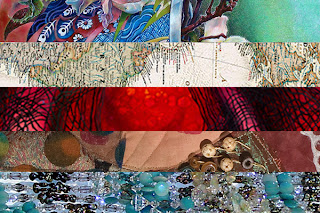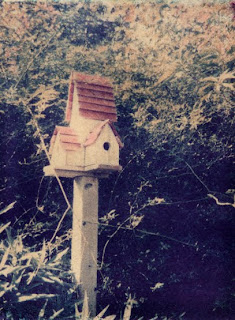Before the invention of color film, important black and white photographs were painstakingly colored by hand with oil paints or watercolors. When motion pictures first became popular, the audience would often see hand-colored lobby cards enticing them into the theater, although the movie they would watch was in black and white. But it's no surprise that when color film became affordable and readily available, hand-coloring (or "hand-tinting" as it was often called because of the subtlety of the colors) fell out of favor.
I've always enjoyed hand-colored photographs. I appreciate the work that went in to making them and they seem to have a magical quality that I find fascinating. I first became interested in the look when I was a child. In my grandparents' home was a beautifully hand-colored photograph of my mother, in profile, at the age of five or so. It now hangs in my home, still in its antique oval frame with convex glass, and still quite a mesmerizing work of art to this day. Years ago, when I decided to turn my attention to making art on a regular basis, naturally I was eager to try the hand-coloring process.
Using Marshall's Photo Oils and pencils, I began by working on vintage portraits, my own family's and many found at antique stores and photo collectible shows. The original photo was never touched; a matte-finish black and white copy would be made for coloring purposes. Copying also allowed enlarging the image when that was desirable. Many vintage photos have a sepia tint; copying removed that so that it wouldn't interfere with the coloring. Here's an example that shows how a vintage photo can be altered by hand-coloring:
 |
| Original sepia-toned photograph. |
 |
| Black and white copy. |
 |
| Hand-colored. |
I love the ethereal quality that hand-coloring gives the picture. I like to keep vintage hand-colored images as close as possible to the integrity of their source, including using colors that I think are appropriate. But when I make reproduction prints of my original contemporary photos (and those made with my partner, John Semper Jr.) that I've hand-colored, occasionally computer-enhancement may be added to create significant changes to color balances and other more dramatic alterations with filters.
There is a selection of Vintage, Classic and Contemporary Photo-Graphics available on greeting cards in my
Red Bubble shop. Original Classic and Contemporary photographs are being posted individually on this blog with links to order greeting cards and prints on each post.
Please feel free to comment or e-mail if you have questions about the hand-coloring process.


















































